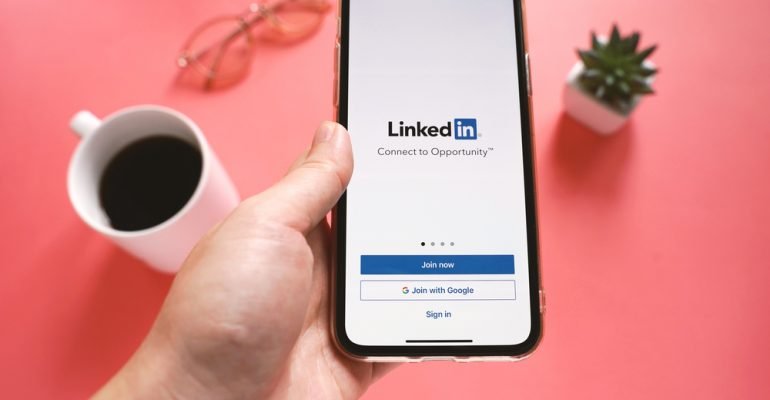Do’s and Don’ts of Networking on LinkedIn for Language Professionals
March 17, 2021 2021-03-17 13:13Do’s and Don’ts of Networking on LinkedIn for Language Professionals

Do’s and Don’ts of Networking on LinkedIn for Language Professionals
LinkedIn is all about connections, as the name says, and professional connections, specifically. It can be a treasure trove for language professionals who want to expand their network of colleagues and potential clients. But how exactly is this best done? With whom should you connect and how? And then what?
Let’s consider two fictitious examples of networking messages sent or posted to LinkedIn to consider some must-nots and must-dos to use it effectively.

Foreign Language Translator
“Hi, everyone! I need a job ASAP!!!!! I know some languages so I do translation… or anything you want…for whatever you want to pay!“
Experienced translator ♦ English and Italian to Portuguese ♦ Expert in NGOs, international development, microfinance 🌱 I help you communicate to build a better world.
“Hello Mary Incharge [name of press officer of Dream Client], I admire the work your organization is doing around the world in microfinance. I see that you have recently launched projects in Portuguese-speaking Angola and Mozambique. As you can see from my LinkedIn profile, I have 10 years’ experience translating English and Italian to my native Portuguese. I would love to help your team ensure effective communication in Portuguese to help outreach to these communities and communicate to potential Portuguese-speaking donors around the world. Let’s talk!”
The differences in these social media networking messages are none too subtle. Let’s break them down to see how we can most effectively form connections that may lead to interesting work opportunities
Who’s your audience?
“Hi, everyone!” vs “Hello, [specific potential client you have researched]”
Everyone is a lot of people! Seek connections and communication with those who need your specific skills and services.
How to target your audience on LinkedIn
Connect to your clients and clients you’d like to have, and then connect to their connections
LinkedIn allows you to send connection invitations to those within three degrees of separation. So if your colleague John, one of your LinkedIn connections, is connected to Nicoletta and Nicoletta is connected to Omar, you can send invitation connections to Nicoletta and Omar. For most language professionals, especially freelancers, I’m a proponent of having many connections on LinkedIn in your fields of interest. Some may choose to keep their connections limited to people they already know and tend those relationships. But, when you have more connections in a field, you show up in more searches and have the option to connect to more people.
Focus on those who work in the industries that interest you. Your past clients are a great place to start. Search with filters to find employees who work at those companies and are within three degrees (i.e. the ones you can connect to LinkedIn). Write them a message reminding them of your connection, if you know them in “real” life, or, if not, why you want to connect to them. If they accept, look at their connections and consider connecting to them. You can use filters to connect only to their connections who work in your fields of interest, are in certain geographical areas, and more.
Connect to your colleagues
I posted a survey on LinkedIn about how language professionals find new clients, and in the number one position was word of mouth from colleagues. Especially colleagues in your language combination or going in the opposite direction who work in the same specializations can be a goldmine of passed-on work. EN>IT translators are one of my greatest resources for work as an IT>EN translator.
Join groups
You can join up to 100 groups on LinkedIn, which automatically expands your connection options to those in the same groups. Choose large, active groups in your specializations and source languages. For instance, one of my specializations is sociology and I translate from Italian to English, which means my potential clients are almost always Italian, so I joined an Italian-language sociology group. Then be generous in contributing your expertise to the group. Consider starting your own group.
Follow companies and individuals in your specializations
Then, engage in their communication, demonstrating your expertise in comments, shares, etc. Follow #hashtags for your specializations. You do this by clicking on or searching a hashtag like #linkedinoptimization and then you’ll be taken to a page with all posts using the hashtag and you can follow it.
Post with your target audiences in mind
Think about what is relevant to them (not just you). Use hashtags related to their interests. Post in your clients’ language, a mix of your source and target languages (possibly writing bilingual posts), or in English if that’s the lingua franca of your sectors. Write articles that demonstrate your language skills and expertise in one shot.
✔ Do target your audience
✘ Offer everything to everyone all the time
What’s in it for them?
“I need a job…” vs “….I’ll help you communicate effectively to potential donors”
Don’t overestimate the selflessness of potential clients and employers. You, and maybe your mother, care about your needs. Clients care about their own needs. Understanding what those needs are (even if they don’t yet know they have them!) and showing them how your specific skills can meet those needs equals successful client networking. By following and engaging with potential client companies and their employees, you can see how they work, what they care about, what their business culture is like, and if they might need your services.
By generously sharing your knowledge and expertise in posts, comments, articles, etc., you engage, demonstrate your skills, and keep yourself fresh in the minds of clients and colleagues.
“How do I write a message to potential customers without sounding like I’m begging?”
Many language professionals I talk to get the willies at the idea of self-promotion and especially of approaching potential clients. Taking the client’s perspective can help you do this more effectively and feel more comfortable doing so. Rather than thinking of it as “begging” for anything, think about and present yourself as offering a solution to their problems. As in the fictitious example of my twin, the EN>PT translator, she has the unique skills to solve her potential client’s problem of needing quality Portuguese translations to reach their Portuguese-speaking donors and beneficiaries. As another example, I know my EN>IT colleagues need quality English translation for their websites and LinkedIn profiles (even if they don’t realize they should have a bilingual profile). I know that a DIY or sloppy translation would undercut their message so I wrote them offering my services in IT>EN translation with a discount for colleagues. I don’t think anyone thought I was begging for work.
✔ Do take your potential client’s perspective
✘ Don’t be all about “me, me, me”
What exactly can you do?
“I know some languages so I do translation,” vs “I have 10 years’ experience translating English and Italian to my native Portuguese and am an expert in international development.”
Many language professionals make a too-little-information mistake in their profiles and especially their headlines (the part under your name that includes your job title). Instead of making ample use of the 220 characters allowed to tell us what they do — vital details like which languages, which specializations, which qualifications — they just write “translator” or “freelance interpreter” or “language teacher.” Every time you show up in a search, someone sees a post you wrote or responds to the connection request or email, they see your name and headline. In this blog post, I give more tips about what to include and exclude for an effective headline.
Without having to hunt through your profile, you want clients to know your working languages, your services, and your specializations. No one searches “foreign language translator” when looking, for instance, to translate their academic article in anthropology from Italian to English.
✔ Do be specific about who you are and what you do
✘ Don’t be a do-it-all, know-it-all
Why you?
“Hi!”
Don’t forget the social in social network. Though you want to be professional (and definitely not treat it like Facebook or, worse yet, Tinder!), show who you are and engage as a full human being. Include a picture of yourself, looking professional but personable. No logos instead of individual profile pictures. In your profile and posts, feel free to talk about interests outside of work.
Who-you-know and word-of-mouth have always been, and always will be, prime factors in getting jobs. LinkedIn helps you leverage these age-old approaches. For instance, when I’m asked to recommend translators in specific combinations or specializations, I send shortlists of names, usually of translators I already know, with their LinkedIn profiles so the clients can evaluate them for themselves. Writing and requesting recommendations also boosts the word-of-mouth effect.
✔ Do be human
✘ Don’t be impersonal
Your specific LinkedIn strategy should depend on what you want to accomplish: e.g., get an in-house job in translation management, get more clients as a freelancer in a particular industry, or have a quick-and-easy online presence to back up your other strategies, such as trade fairs, word of mouth, association directories, and your own website. But the cornerstones of all LinkedIn networking strategies are: target, connect, share, engage, and cultivate your relationships.
Real-life example:
I want my fellow language professionals to sign up for my webinar on the Perks and Pitfalls of Linked in Language Professionals. I’ve previously connected to many translators and interpreters, using the LinkedIn search filter for people in the “Translation and Localization” industry, in translator associations, and in certain geographic areas. I’m directly inviting to the event as many of them as LinkedIn allows (1,000 a week). I share my knowledge in the comments of colleagues’ posts about how to best use LinkedIn. I posted about it using the hashtag #linkedinoptimization. I posted a video demonstrating how to make your LinkedIn profile multilingual and explaining how key this is for us. I did not write a post, “Hey, everyone!!!! I want money. Sign up here!”
Other links:
Miriam’s website: https://miriamhurley.com/
A Portland Career: https://www.aportlandcareer.com/


